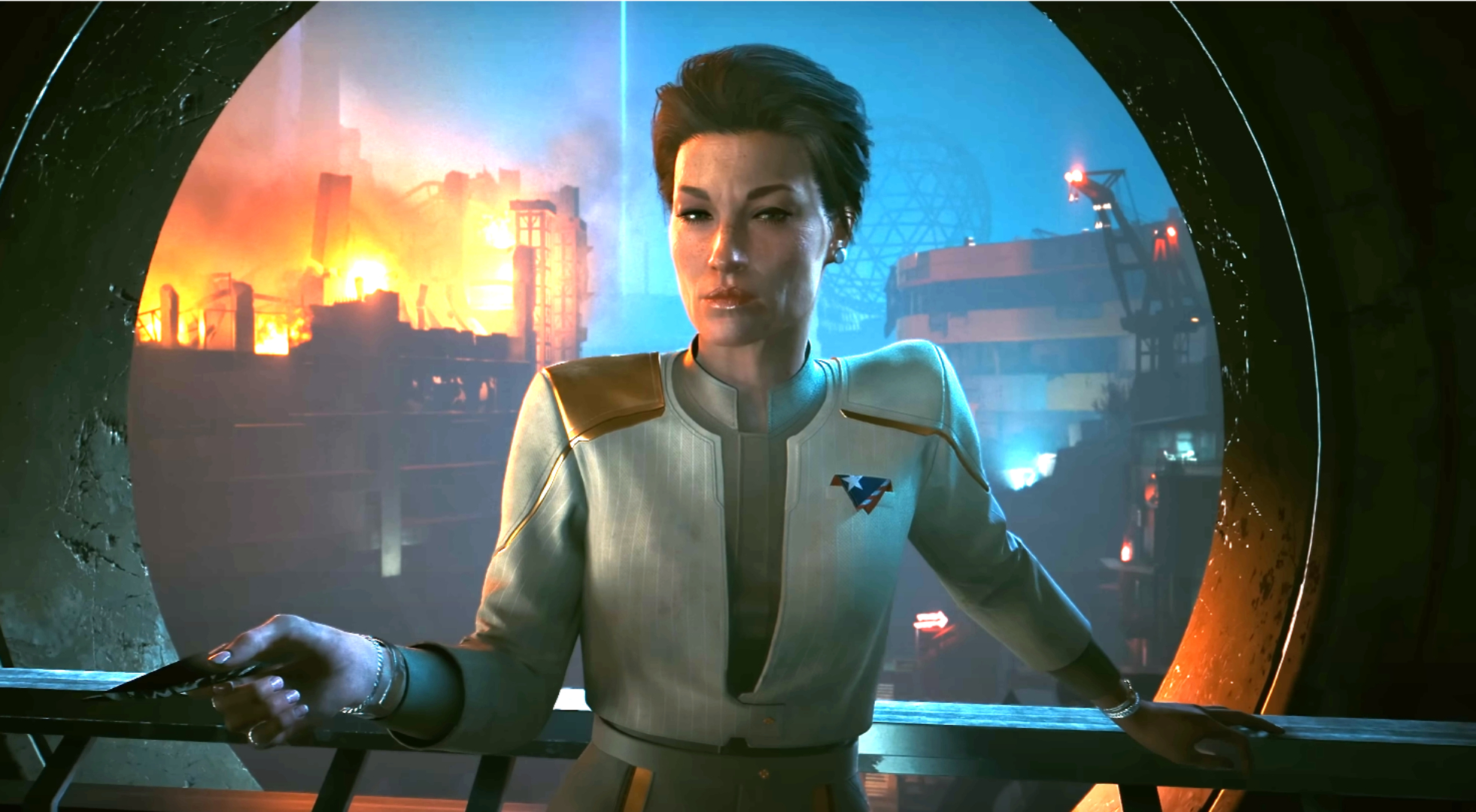CDPR dev admits that Cyberpunk 2077 ‘could have been better’
Toe the line

In a recent stream, Cyberpunk 2077’s quest director Paweł Sasko took the time to answer questions from viewers about the highs and lows of CD Projekt Red’s dystopian sci-fi RPG.
In what might otherwise have been a run-of-the-mill stream of Cyberpunk 2077, Sasko used the platform to answer some fan questions about the title’s story composition and had a lot to say about its narrative design (via PCGamesN).
He acknowledged that the game has an “insane amount of linearity” and that the different branches of player choice were “not satisfactory”. He went on to highlight how developers tend to see “nonlinearities in a much broader sense than players do”, which meant that “for the players [Cyberpunk 2077’s story choices] were not enough”.
That said, Sasko did describe some of the player criticism as “slightly overblown”. “People claim there’s nothing, [but], if you use such a strict definition [of what branching storylines are], then you get to the fact that literally only the biggest branches matter and nothing else,” Sasko said. “I’m not saying that we did a… wonderful job. I think it’s fine. I think it could have been better.”
You can find the full stream on Sasko's Twitch channel. His discussion of players’ questions and Cyberpunk 2077’s narrative design can be found at the 1:17:00 mark if you want to hear his comments for yourself.
Story time

Sasko also drew comparisons between Cyberpunk 2077 and CD Projekt Red’s previous project: The Witcher 3. The Witcher 3 set something of a bar for story-driven open-world RPGs with branching narratives, and Sasko spoke highly of it: “it’s not possible to have identical playthroughs [of The Witcher 3] at all”.
“Players expected more [from Cyberpunk], because of how The Witcher 3 is built… expectations were higher,” Sasko explained. “In The Witcher 3, you had gigantic branches [including] the Bloody Baron… vampires or [the] fairy tale world [in Blood and Wine].” This meant that, when it came to Cyberpunk 2077, “expectations were [high] regarding big [narrative] branches”, meaning that the “incredibly linear” Cyberpunk was never going to meet player demand.
Sign up for breaking news, reviews, opinion, top tech deals, and more.
Sakso went on to discuss one particular branching story path in Cyberpunk 2077 as a point of comparison, namely the (potential) death of Arasaka Corporation agent Goro Takemura. “Takemura can die or not… [it took] so much to make [both branches] work” from a narrative design perspective. However, Sakso conceded that once people learn of the fact that you can save this fan-favorite character by completing a hidden secondary objective in a main story quest, they “run to save him”, meaning that “something that was designed to be nonlinear [stops being] a choice.”
In a recent playthrough of Cyberpunk 2077 over the Christmas break, I discovered this previously unknown story path for myself. Once I learned that Takemura could be rescued from his predicament, I loaded a previous save and got the outcome I desired. CD Projekt Red had done such a good job of presenting Takemura as a sympathetic character that letting him die no longer seemed like a palatable option. Sakso was right: it wasn’t really a choice.
The revelations Sakso offered in his Twitch stream remind us that it isn’t enough to fill a game with arbitrary player choices; the choices have to mean something – each offering a unique and worthwhile story beat in and of themselves.

An editor and freelance journalist, Cat Bussell has been writing about video games for more than four years and, frankly, she’s developed a taste for it. As seen on TechRadar, Technopedia, The Gamer, Wargamer, and SUPERJUMP, Cat’s reviews, features, and guides are lovingly curated for your reading pleasure.
A Cambridge graduate, recovering bartender, and Cloud Strife enjoyer, Cat’s foremost mission is to bring you the best coverage she can, whether that’s through helpful guides, even-handed reviews, or thought-provoking features. She’s interviewed indie darlings, triple-A greats, and legendary voice actors, all to help you get closer to the action. When she’s not writing, Cat can be found sticking her neck into a fresh RPG or running yet another Dungeons & Dragons game.